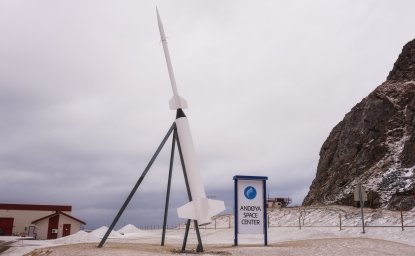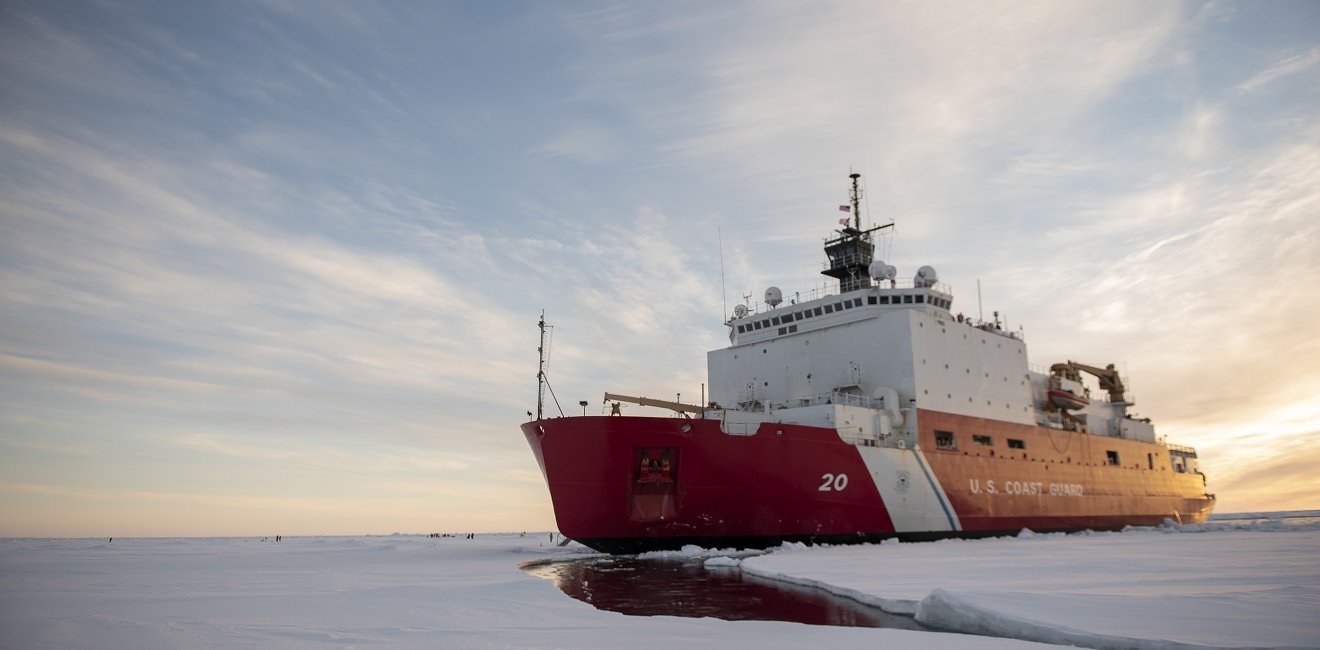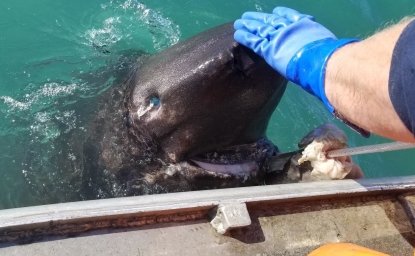
A blog of the Polar Institute
The future US Coast Guard polar icebreakers, designated Polar Security Cutters (PSCs), have multiple roles to fill in support of US national interests when operating in the Southern Ocean. The Wilson Center Polar Institute’s September 2023 conference titled “The Rules-Based Order in Antarctica and Global Challenges" highlighted many of these roles and keyed on the importance of maritime presence and marine scientific capability around the Antarctic Continent.
The US Coast Guard first operated a polar icebreaker in the Antarctic when the Wind-Class icebreaker Northwind supported Rear Admiral Byrd’s Operation High Jump in 1946. Coast Guard icebreakers have supported US Antarctic operations nearly continuously since 1955 during the first Operation Deep Freeze. It is not surprising that new Coast Guard polar icebreakers have multiple responsibilities at both ends of the globe supporting a range of national interests and, importantly, a host of federal agencies (such as NSF, DOD, DOI/USGS, DOC/NOAA, NASA, and DHS).
The PSCs must always be viewed by the Coast Guard and all stakeholders as unique national assets that are multi-mission platforms. These polar ships are foremost the US federal law enforcement and visible naval presence in the Southern Ocean. The primary mission is to conduct icebreaking in the Ross Sea escorting a tanker and supply ship into the US McMurdo Station, all in support of the National Science Foundation (NSF) as manager of the US Antarctic Program. Creating an annual ship channel (routinely and effectively in two-meter-thick sea ice) for support ships to reach an ice pier at the Station is a critical mission requiring icebreaking capability that ranks among the world’s most powerful polar ships.
Since ratification of the Antarctic Treaty in 1961, Coast Guard icebreakers have supported the Department of State in the conduct of Treaty inspections of foreign scientific stations around the Continent. Article VIII of the Antarctic Treaty and Article 14 of the Protocol on Environmental Protection to the Treaty allow station inspections by Consultative Member states. Coast Guard icebreakers have been primary platforms for the US inspection effort; the PSCs will provide the endurance, icebreaking capability, and embarked helicopter operations to remote station locations that are critical factors in performing these key Treaty operations. In this manner the PSCs will support US efforts to maintain the rules-based order provided under the Antarctic Treaty System.
Past Coast Guard icebreakers have conducted traditional missions in the Southern Ocean such as search and rescue (SAR) (for example, the rescue of foreign fishing vessels, support ships, and research ships beset in sea ice) and environmental response (one example has been responding to oil spills from abandoned coastal stations). Surveillance and monitoring of maritime operations in the Southern Ocean will be another critical task in the 21st century. On occasion Coast Guard icebreakers have provided support to refueling foreign research stations. They can always act as an incident command center and could in the future assist in the enforcement of international rules and regulations such as the International Maritime Organization’s Code for Ships Operating in Polar Waters (Polar Code).
Providing support to research will be an important, integral role for the PSCs in future decades. This support can be categorized in three ways:
First, the PSCs can serve as ‘US hydrographic ships’ using their installed multi-beam sonars in the remote and generally uncharted regions of the Southern Ocean. These operations can provide key data to the NOAA’s National Ocean Service charting efforts and the International Hydrographic Organization’s mapping, and further support oceanographic research on understanding the seabed around the Continent.
Second, the PSCs will be critical environmental observation platforms for oceanographic and atmospheric research. Much of the data-taking can be automated. This key role should not be under-valued as a significant contributor to US Antarctic and broad scientific interests. This data can also be used to ground-truth satellite observations. The long transits of the PSCs across the Pacific and operations in hard-to-reach, Antarctic coastal waters make their routine observations significant contributions to national and international databases on environmental change.
Third, the PSCs need to be equipped to conduct ‘expeditionary’ research that can be supported by installed systems, such as a CTD system, winches, deck equipment to support autonomous underwater vehicles, and a flight deck for drones and helicopter operations. Weight and space must be reserved for specialized laboratories that could be containerized and brought aboard for unique scientific surveys.
Notable is the fact that each of the studies conducted on the Coast Guard icebreaker fleet since 1984 (at least six major interagency, US National Academy, and Coast Guard studies) include support to scientific research as an important capacity for all new polar ships. Congress has noted this key research support requirement for the PCSs and other future Coast Guard polar ships. Also, NSFs recent plans to operate a single, icebreaking research ship in the Southern Ocean in future years places a premium on supplemental research support and capacity that can be provided by the PCSs to the US Antarctic Program.
The key to the future employment of the Coast Guard’s PSCs in the Southern Ocean will be taking a holistic view, a serious ‘whole of government’ approach, with significant, interagency cooperation and planning. Only in this manner can US national interest in the Antarctic be enhanced and a national maritime asset be effectively utilized.
Author

Fellow, Center for Arctic Study & Policy, U.S. Coast Guard Academy

Polar Institute
Since its inception in 2017, the Polar Institute has become a premier forum for discussion and policy analysis of Arctic and Antarctic issues, and is known in Washington, DC and elsewhere as the Arctic Public Square. The Institute holistically studies the central policy issues facing these regions—with an emphasis on Arctic governance, climate change, economic development, scientific research, security, and Indigenous communities—and communicates trusted analysis to policymakers and other stakeholders. Read more

Explore More in Polar Points
Browse Polar Points
Greenland’s New Governing Coalition Signals Consensus

Fulbright Arctic Initiative IV Scholar at the Polar Institute


